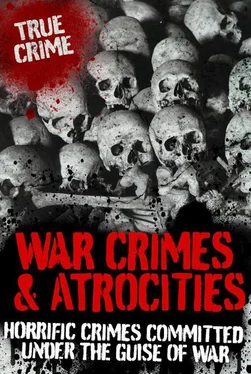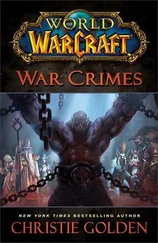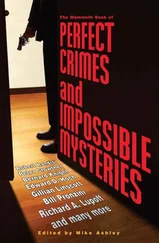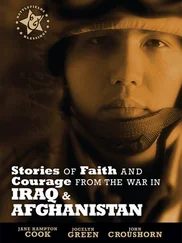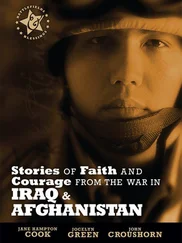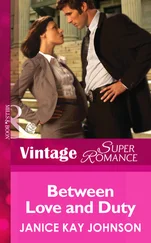Estimated civilian deaths at the end of the war amounted to 50,000, and many more were made homeless. The subsequent environmental consequences as the result of malnutrition and other serious health problems caused further civilian devastation. This, and the fact that no ‘weapons of mass destruction’ were actually uncovered, has opened arguments that attacking Iraq may have involved committing not only war crimes, but crimes against humanity as well.
WAR CRIMES FROM ABOVE
According to the terms of the Nuremberg Convention:
The crimes hereinafter set out are punishable as crimes under international law: wanton destruction of cities, towns or villages, or destruction not justified by military necessity.
The Geneva Convention quite clearly states that it is a war crime to launch indiscriminate attacks affecting the civilian population or their property. If this is the case, why do the ordinary people of Iraq still have nightmares about the constant air attacks on their homes during the Iraqi War. Time and time again, US planes bombed peasant villages where they knew full well that there were no military bases. Added to this, the use of depleted uranium causes poisoning by radiation, and this too has destroyed the lives of untold numbers of civilians and soldiers alike. For example,
13 members of staff at the Basra Training Hospital, who were all present when the building was bombed with armour-piercing shells covered with uranium, are now all suffering from cancer. The use of depleted uranium is most certainly a war crime, the horrific consequences of which are still to run their course.
The cluster bomb is one of the most heinous, unpredictable and deadly weapons of modern warfare. It is a 4-m (14-ft) weapon that weighs about 453 kg (1,000 lbs). When it explodes it sprays literally thousands of smaller bomblets over a large area. These were dropped on populated areas, not only maiming and killing civilians, but also farm animals and wildlife – in fact, anything they came into contact with. In addition, the small bombs are bright yellow and, because they look like playthings, thousands of children have been killed by dormant bomblets, which then explode spraying shards of metal that can tear through a 6-mm (G-in) sheet of steel. Under the Geneva Convention, it is a war crime to use weapons in the knowledge that they ‘will cause an excessive loss of life or injury to civilians’, which definitely makes cluster bombs criminal weapons.
The Iraqi War was the deadliest campaign for non-combatants since the Vietnam War. Reports that have been gathered from hospitals and morgues show a level of civilian casualties that far exceeds the First Gulf War, which in itself cost more than 5,000 civilian lives.
FALLUJAH MASSACRE
In November 2004, there was a major assault on the Sunni city of Fallujah when US and Iraqi military forced out the town’s residents, bombed hospitals and buildings, attacked whole neighbourhoods and then denied the entry of relief workers into the area. The attack was so severe it made the Mai Lai massacre that took place in Vietnam seem pale by comparison. Using the deadly Lockheed Ac-130 ‘Spectre’, which is a deadly weapon that pumps out thousands of rounds of high-explosive ammunition every minute, US forces destroyed 10,000 buildings, and as a result made over 100,000 residents homeless.
The day started peacefully when approximately 200 demonstrators turned up outside a school that had been taken over by about 100 US soldiers the previous day. The demonstrators had come in peace to ask the soldiers to leave so that they could reopen the school. The US soldiers claimed that they were fired upon and acted accordingly, but there is absolutely no evidence to corroborate their story. Witnesses have described a scene of complete mayhem, as the soldiers fired on unarmed demonstrators who were fleeing in fright. The road was stained with large patches of blood, and shoes lay discarded as the people ran to get away from the massacre.
There have also been reports that the USA used white phosphorous as a weapon in the Fallujah attack. This would be consistent with the stories that the refugees related afterwards, describing the phosphorous weapons, horribly burnt bodies and fires that were impossible to put out with water. Almost one year after these allegations came to light, a new harrowing documentary entitled Fallujah: The Hidden Massacre was produced, which provided fresh evidence of the use of chemical weapons.
It is believed that the death toll of the Fallujah massacre was 600, with another 1,000 injured. Local hospitals reported that the majority of the victims were women, children and the elderly, and that more than 60,000 women and children fled the city in panic. After the attack many of bodies were buried in the city’s football stadium because the US forces had blocked the road leading to the cemetery.
Unfortunately, the Fallujah massacre was not just an isolated incident and the atrocities committed there will never be forgotten by the Iraqi people. The words of the US government that they were there to help ‘liberate’ the Iraqis seems to be slipping away into oblivion to reveal the crude reality of foreign occupation and violent oppression.
THE WEDDING MASSACRE
In the remote village of Mukaradeeb, wedding celebrations had only just finished on 19 May, 2004, and at 10.30 p.m. the guests were hurrying back to their homes at the end of a lovely day. The wedding was the biggest event to take place that year in the small village of just 25 houses, and it had brought a lot of people together. The bride and groom, Ashad and Rutba Rakat, had already settled in their tent for the night when they heard the first sound of a fighter jet in the sky above. Then some of the guests saw the headlights of what appeared to be a military convoy heading their way.
The bombing started at about 3.00 a.m. and the first place to be hit was the tent that had been used for the ceremony. People started running out of the main house where the wedding took place as bombs fell, destroying the entire area. By this time, the armoured vehicles had reached the village and started firing machine guns at the people outside the house.
Just before dawn, two large Chinook helicopters dropped off many more soldiers. They set explosives in the main wedding house and the building next door. Just a few minutes later, the two buildings exploded, leaving just a pile of rubble. Everywhere lay bodies of women, children and men, all badly mutilated. By sunrise the death toll was 42, with 27 of them being members of the now extended Rakat family. Remarkably, the bride and groom were among the survivors because they had been sleeping in tents away from the main house.
The explanation by the US military was that they had been targeting a ‘suspected foreign fighter safe house’, during which time they had come under hostile fire. Despite the fact that there was no evidence to back their story, the US military continued to claim that the Mukraradeeb was a legitimate military target. At the end of the day, 27 small mounds of dirt and one crudely cut marble headstone bearing the words ‘The American Bombing’ are grim reminders of what once again appears to have been a pointless attack on innocent civilians.
AND SO IT GOES ON…
Previously, in early April, night-time raid on a farm in the Al Janabin suburb on the edge of Baghdad killed 20 civilians, including 11 children. The following day Al Jeezera television showed footage of a predominantly Christian town, Bartallah, having received heavy civilian casualties after a night of intense bombing.
Just three weeks into the war, the Americans dropped bombs on a residential area of Baghdad. This killed 14 civilians, most of them members of a Christian family. The wanton destruction of cities and villages went on and on, leaving a trail of carnage behind them.
Читать дальше
